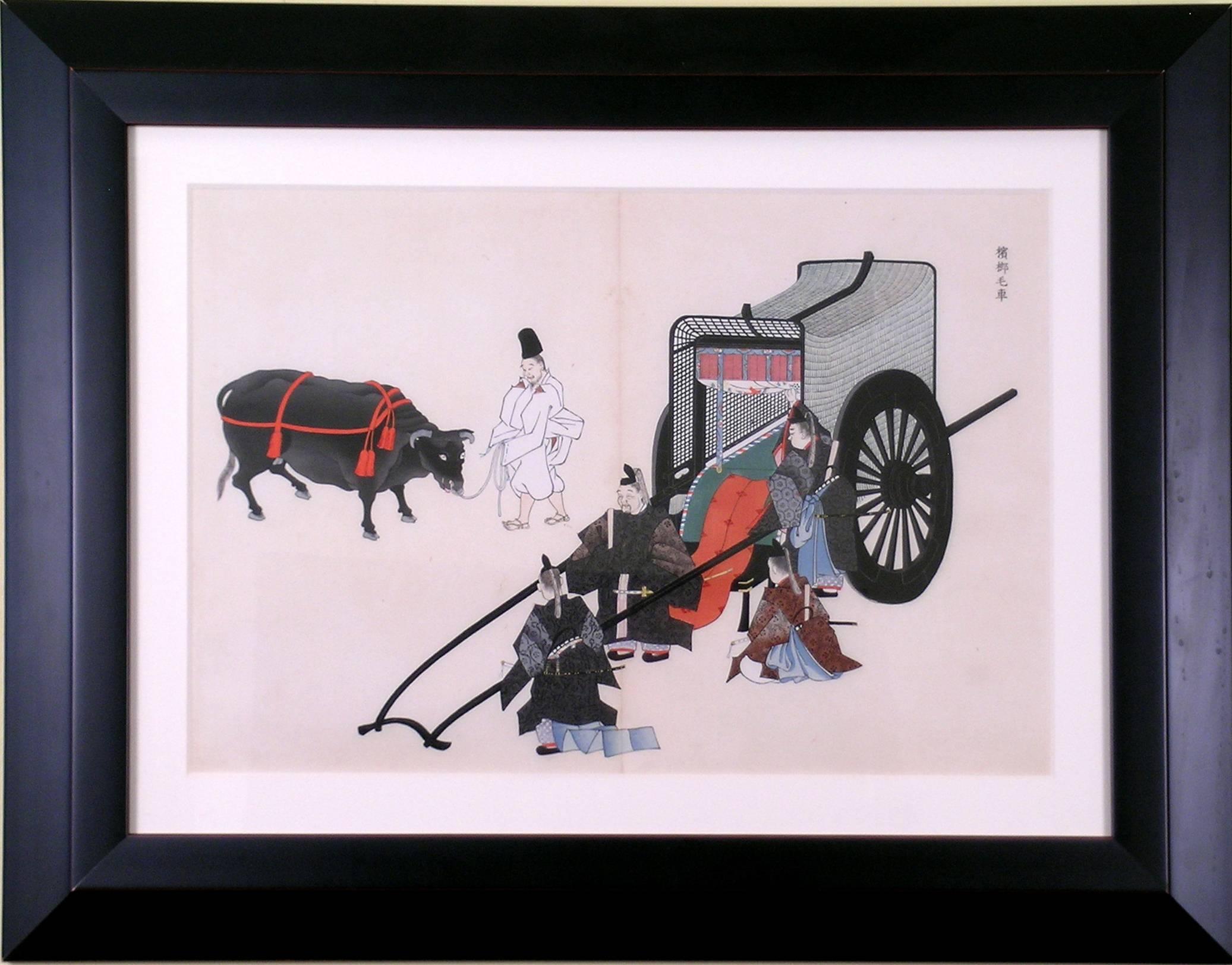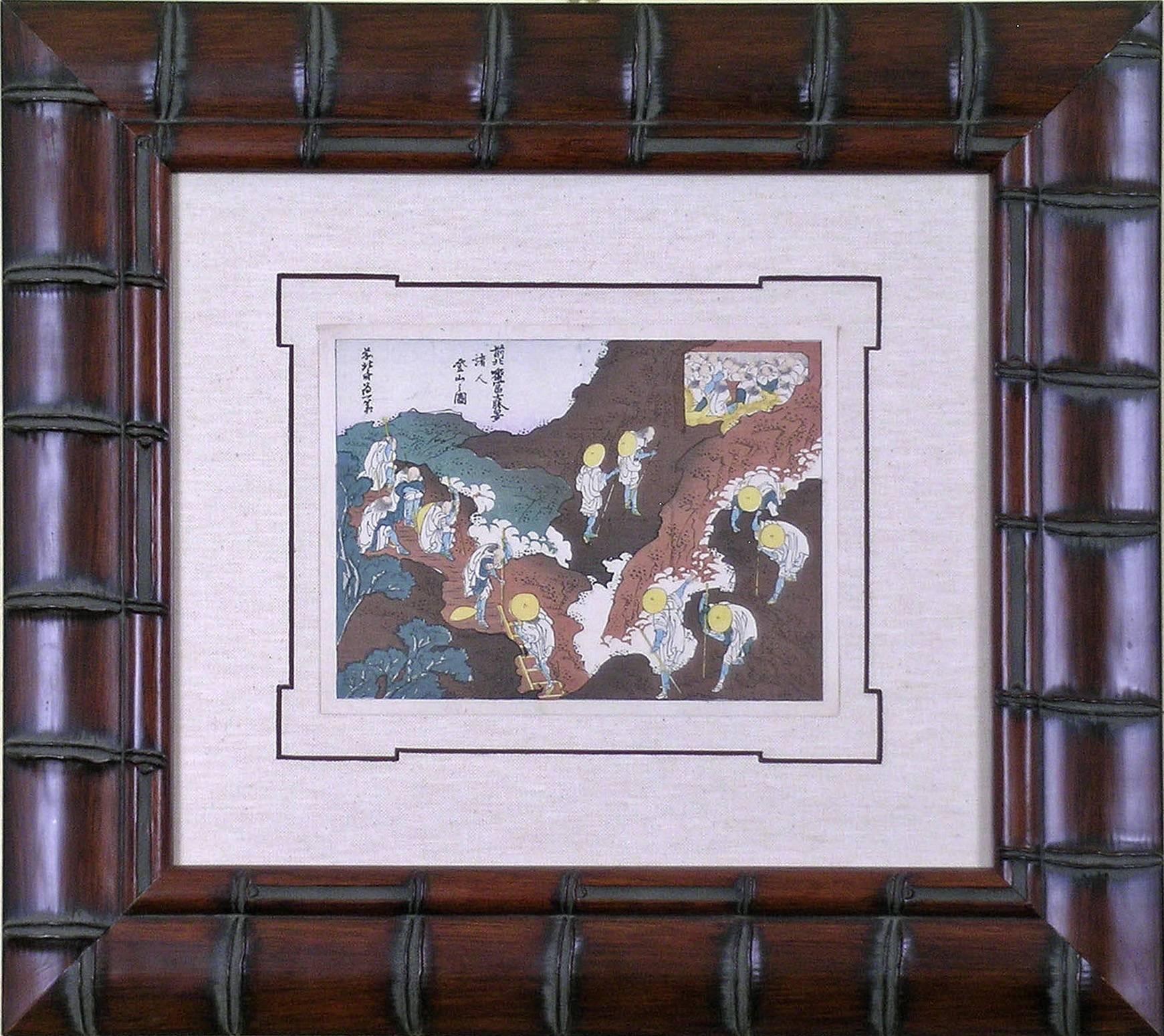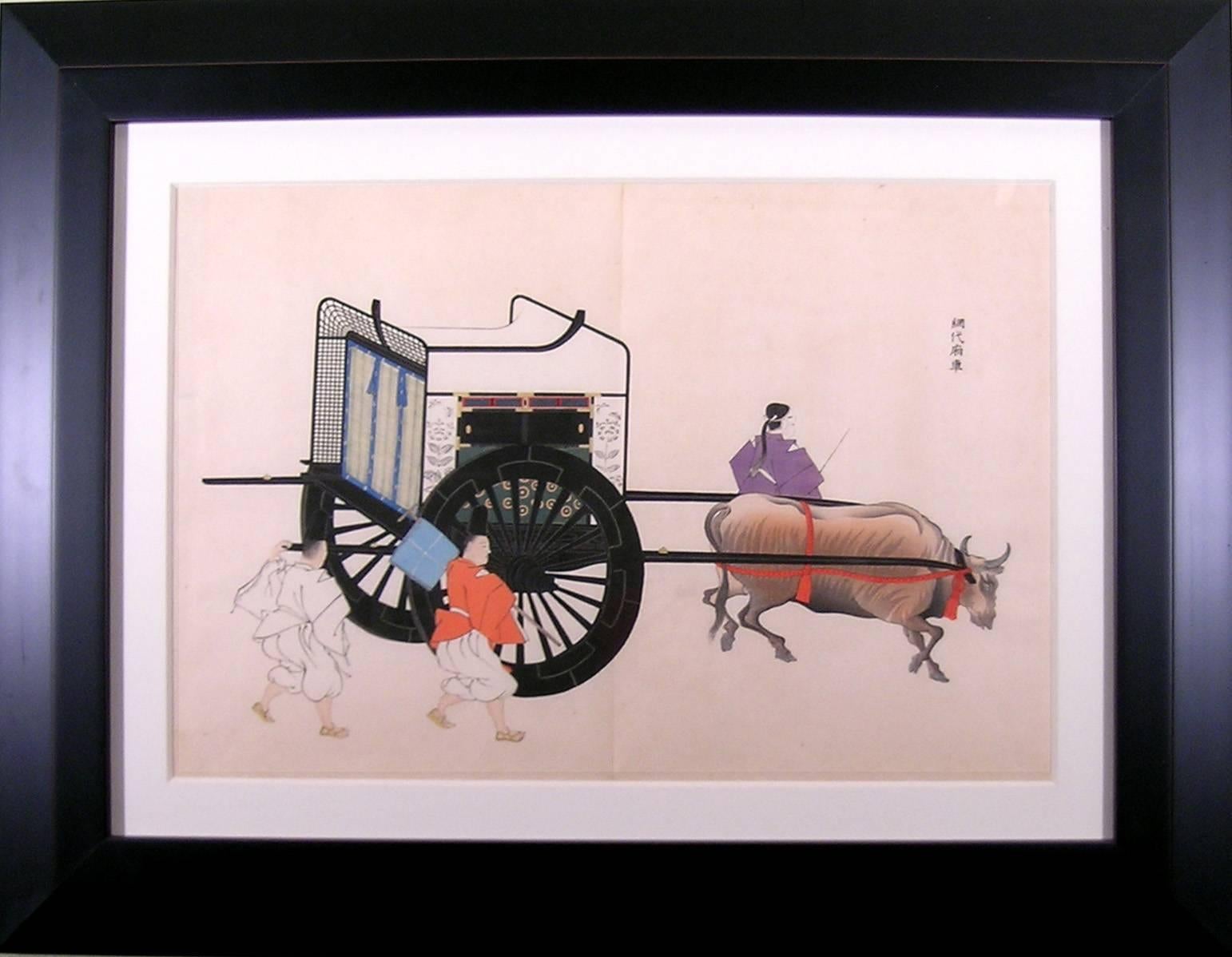Want more images or videos?
Request additional images or videos from the seller
1 of 6
Matsui YuokuBlue and White Kimonos1900
1900
About the Item
REISHIN GACHO
(Album of Beautiful Designs)
Japanese Kimono Designs
Matsui Yuoku, Painter
Japan, 1900 (Meiji 33)
Honda Ichijirou, Publisher
Woodblock Prints
Celebrated as much for color as pattern, the kimono is the traditional dress of Japan. Design often reflects the marital status of a woman. It can also show a specific season. Many different techniques are used for the making of kimonos: batik, shibori, and weaving. A tendency toward brighter colors and more opulent materials marks the Meiji period (1867-1912). At this time the Emperor regained his throne and opened Japan for foreign trade. This boosted the country’s prosperity. Kimono wearing has its own etiquette.
Woodblock printing flowered in the Edo Period, mid to late 19th century, and is still considered an art form of great precision and beauty. Matsui Yuoku captures both the vitality and life inherent in the kimono patterns in each color woodblock print. Following the artist sketch, an image is carved into a block of wood. Black inks form the outline of the flower and color inks are applied to specific areas. The woodblock is then pressed to hand-made screened paper which is then hung to dry. The entire process of composing a single image can take weeks.
- Creator:Matsui Yuoku (Japanese)
- Creation Year:1900
- Dimensions:Height: 21.5 in (54.61 cm)Width: 27.25 in (69.22 cm)
- Medium:
- Movement & Style:
- Period:
- Condition:Clean, crisp image. Original hand-coloring. Framed to museum specifications using archival matting, backing, hinging. Glazed with ultra-violet filtering Plexiglas. Minor worm and binding holes.
- Gallery Location:Florham Park, NJ
- Reference Number:
About the Seller
5.0
Gold Seller
These expertly vetted sellers are highly rated and consistently exceed customer expectations.
1stDibs seller since 2014
161 sales on 1stDibs
Typical response time: 3 hours
- ShippingRetrieving quote...Ships From: Florham Park, NJ
- Return PolicyA return for this item may be initiated within 1 day of delivery.
More From This SellerView All
- PartridgeBy Kono BaireiLocated in Florham Park, NJKono Bairei (1844 – 1895) Kacho-ga. (Birds and Flowers) Japan, c1880 Partridge Print. Okura Magobei, Publisher. The enthusiasm for nature prints transcends the centuries. “One Hundred Flowers” is a mid-nineteenth century work illustrating varieties of flowers in naturalistic styles. Traditional woodblock printing enhances the beauty of each work. The artist must carve different woodblocks for every color he wishes to transfer to paper. In this style of printing it is imperative that the register of each woodblock be exact as they must match perfectly to create an image without blurring. In addition to his illustrated flower books...Category
Late 19th Century Academic Prints and Multiples
MaterialsWatercolor, Woodcut
- Oxcart with 5 Men and 1 OxBy Yosha Zuko FuzuLocated in Florham Park, NJYosha Zuko Fuzu Meiji 33 (1900) Woodblock with Original Hand-Coloring Writer: Kosugi Onson, Imaizumi Teisuke Publisher: Yoshikawa Hanshichi The Japanese litters and palanquins...Category
Early 1900s Academic Figurative Prints
MaterialsWatercolor, Woodcut
- The PlanLocated in Florham Park, NJSamurai Warriors Meiji 33 ( 1900) Woodblocks Original Hand-Color Woodblock printing flowered in the Edo Period in Japan, mid to late 19th century, and is still considered an ...Category
Early 1900s Academic Figurative Prints
MaterialsWatercolor, Woodcut
- Men on the MountainBy Katsushika HokusaiLocated in Florham Park, NJFUGAKU HYAKKEI Views of Mt. Fuji Katsushika Hokusai (1760-1849) Woodblock Print 1834-5 Edo period It signifies the long history and the aspirations of the race; it is a token ...Category
Mid-19th Century Academic Prints and Multiples
MaterialsWatercolor, Woodcut
- Dish GardenLocated in Florham Park, NJDish Garden in Blue and White China Japanese Woodblock Original Hand-color. Meji Period. Circa 1895. The enthusiasm for nature prints has spanned the centuries. By the mid-nineteenth century these works, illustrating varieties of flowers in naturalistic styles, had reached a peak of perfection. Each artistic form in traditional printing sought to enhance the beauty of botany. In the woodblock style, as it true for engravings and lithographs, it is imperative that the carving of each block be exacting as they must create an image true to that seen in nature. For many, the dish garden is a re-creation of a favorite landscape design. It provides an opportunity to build a perfect pairing of ornament...Category
Late 19th Century Academic Still-life Prints
MaterialsWatercolor, Woodcut
- Oxcart with 3 MenBy Yosha Zuko FuzuLocated in Florham Park, NJYosha Zuko Fuzu Meiji 33 (1900) Woodblock with Original Hand-Coloring Writer: Kosugi Onson, Imaizumi Teisuke Publisher: Yoshikawa Hanshichi The Japanese litters and palanquins...Category
Early 1900s Academic Figurative Prints
MaterialsWatercolor, Woodcut
You May Also Like
- Greek Architecture Blueprint of Ancient Amphitheatre Cyanotype Print, WatercolorBy Kind of CyanLocated in Barcelona, ESThis is an exclusive handprinted limited edition cyanotype. Details: + Title: Ancient Roman Amphitheater + Year: 2022 + Edition Size: 50 + Stamped and Certificate of Authenticity provided + Measurements : 70x100 cm (28x 40 in.), a standard frame size + All cyanotype prints...Category
2010s Academic Still-life Photography
MaterialsPhotographic Film, Woodcut, Emulsion, Watercolor, C Print, Color, Lithog...
- Venice, View of the Grand Canal - Original etching and watercolor, 1831By Dionisio MorettiLocated in Paris, FRDionisio MORETTI View of the Grand Canal, 1831 Original etching Finely enhanced by hand with watercolor On vellum 26 x 41 cm (c. 10.2 x 16 inch) ...Category
1830s Academic Landscape Prints
MaterialsWatercolor, Etching
- Venice, Rialto Bridge - Original etching and watercolor, 1831By Dionisio MorettiLocated in Paris, FRDionisio MORETTI Venice, Rialto Bridge, 1831 Original etching Finely enhanced by hand with watercolor On vellum 26 x 41 cm (c. 10.2 x 16 inch) Ve...Category
1830s Academic Landscape Prints
MaterialsWatercolor, Etching
- Venice, Santa Chiara Island - Original etching and watercolor, 1831By Dionisio MorettiLocated in Paris, FRDionisio MORETTI Venice, Santa Chiara Island, 1831 Original etching Finely enhanced by hand with watercolor On vellum 26 x 41 cm (c. 10.2 x 16 inc...Category
1830s Academic Landscape Prints
MaterialsWatercolor, Etching
- Bird and Beetle - Etching and watercolor (Natural History of Birds, 1741)By George EdwardsLocated in Paris, FRGeorge EDWARDS Bird and beetle ('The Gowry Bird') Original engraving, enhanced with watercolor Printed signature in the plate Dated, 1741 28.8 x 23.3 cm Created for Volume I of the...Category
1740s Academic Animal Prints
MaterialsEngraving, Watercolor
- Louis I of France as a Roman Emperor, in profile to the rightBy Christoffel JegherLocated in Fairlawn, OHLouis I of France as a Roman Emperor, in profile to the right Chiaroscuro woodcut, 1631-1633 Unsigned (as usual) After a drawing by Hubert Goltzius (1526-1583)...Category
17th Century Academic Portrait Prints
MaterialsABS, Woodcut
Recently Viewed
View AllMore Ways To Browse
Antique Blue Art
Blue And White Flowers
Japan 1900
Kimono Used
Blue White Carved
Antique Blue Print
Antique Blue Dress
Kimono Art
Antique Flower Prints Art Prints
Black And White Antique Pattern
Black Kimono
Wood Block Art Prints
Japanese Kimono Art
Blue White Carved Wood
Kimono Print
Antique Print Block
Japaneses Block Print
Japanese Block Prints





